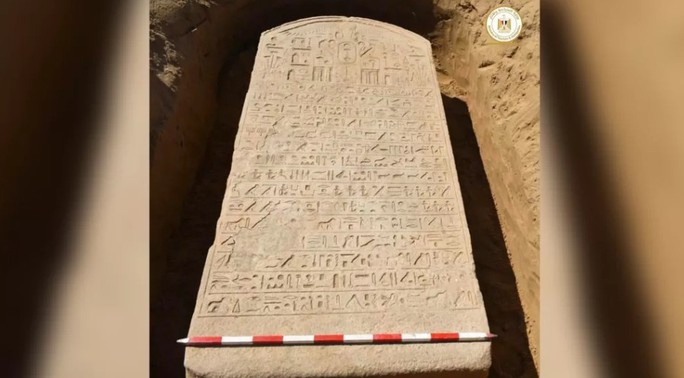The treasure that the lucky Egyptian farmer found was a stele full of hieroglyphs belonging to the pharaoh Apries, who ruled Egypt from 589-570 BC.
According to the unnamed farmer, he was hoeing the ground to prepare for the new crop when he found a strange stone, covered with hieroglyphic inscriptions. He quickly informed the police of the Egyptian Ministry of Tourism and Antiquities.

Close-up of Egyptian treasures that the farmer accidentally found – Photo: Egyptian Ministry of Tourism and Antiquities
Live Science reported that subsequent excavations brought up a rectangular stele 230 cm long, 103 oranges wide, and 45 cm thick. The giant stele features a multi-petaled sun disc – a symbol of the sun god Ra, while 15 lines of hieroglyphs below it claim to be the pharaoh Apries, who is also known as Wahibre Haaibre, reigning in 26th dynasty of Egypt during the period of Egyptian independence and its capital was located in Sais, Northern Egypt.
The rest of the content remains a mystery. Mostafa Waziri, secretary general of the Supreme Council of Antiquities, said archaeologists are trying to translate, but have also understood the gist of the ancient texts describing a military campaign that this pharaoh carried out in the north. Eastern Egypt.
The ancient steles offer a wealth of valuable information about the enchanting world of the ancient Egyptians. With the date, extremely good preservation and the information on the stele, it can be said that the farmer has found a real treasure.
According to the ancient Greek historian Herodotus (who lived 484-425 BC), the pharaoh Apries fought and lost to the Phoenicians, killing many Egyptian soldiers, leading to endless civil war and The pharaoh himself was eventually killed.
Source: nld.com.vn








